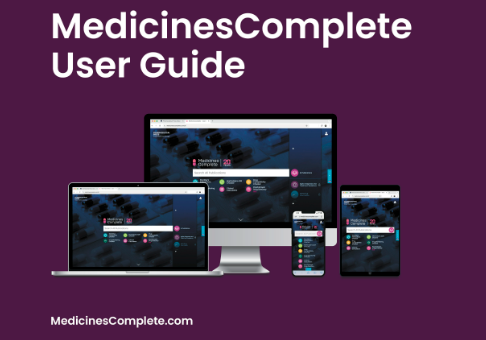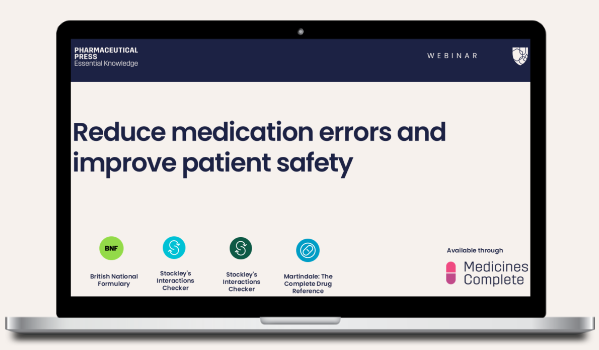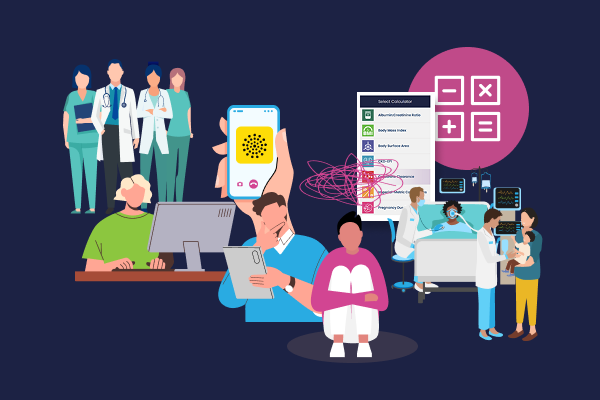Adverse effects of atypical antipsychotics
While atypical (or second-generation) antipsychotics have fewer extrapyramidal side effects (EPS) than their conventional predecessors (i.e. typical or first-generation antipsychotics), they are still associated with important adverse events (AEs).¹ ²
In this article, we will explain the differences between atypical and typical antipsychotic medication and outline the potential AEs of atypical antipsychotics. We will also look at the importance of individualised treatment selection and monitoring for side effects.
Please complete the form at the bottom of this article to request a complimentary trial of MedicinesComplete.
What are antipsychotics?
Health professionals use antipsychotic medicines, also known as neuroleptics, to treat and manage symptoms of a range of psychiatric disorders.¹ ²
Indications include acute psychoses, schizophrenia, affective disorders, including depression and bipolar disorder, and acute agitation.¹ ² The medications have sedative, anxiolytic, antimanic, mood stabilising, and antidepressant properties.
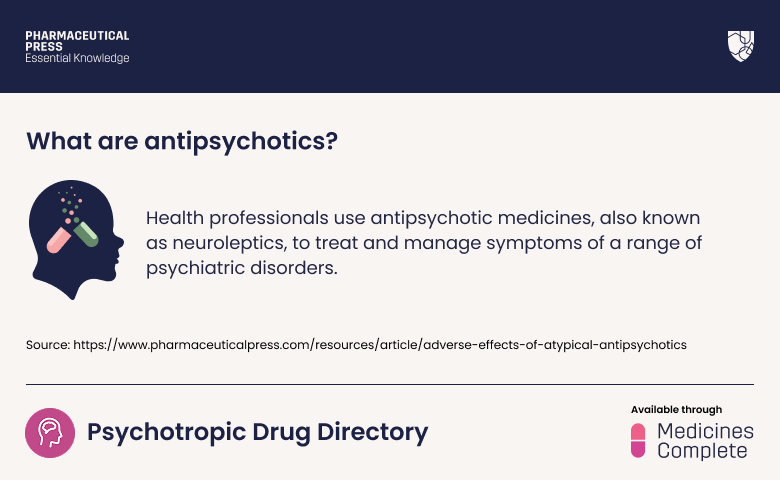
Typical versus atypical antipsychotics
Typical, or first-generation, antipsychotics were developed in the 1950s to treat schizophrenia. Studies later proved them to be effective in other conditions, such as acute mania, agitation, and bipolar disorder.²
Typical antipsychotics include phenothiazine derivatives (e.g. chlorpromazine), butyrophenones (e.g. haloperidol), thioxanthenes (e.g. flupentixol), diphenylbutylpiperidines (e.g. pimozide), and substituted benzamides (e.g. sulpiride).³
They work by blocking the dopamine type 2 receptors in the brain.³ However, this mechanism of action is linked with a number of EPS, or movement disorders, including tremor, parkinsonism, akathisia, and dystonia. Some EPS, notably tardive dyskinesia, develop after long-term exposure to the medicines. EPS can cause distress in patients and are associated with treatment non-adherence.⁴
Atypical, or second-generation, antipsychotics emerged in the 1980s. They act on a range of receptors, with the mechanism of action differing from drug to drug.¹ Relative liability for inducing EPS was the reason for the typical/atypical classification; all antipsychotics introduced since 1990 are classified as atypicals.¹ ⁴
Examples of second-generation drugs include amisulpride, aripiprazole, asenapine, cariprazine, clozapine, lurasidone , olanzapine, paliperidone, quetiapine, and risperidone.³
Psychotropic Drug Directory supports the optimal and rational use of mental health medications, to improve the quality of life for people with mental health needs.
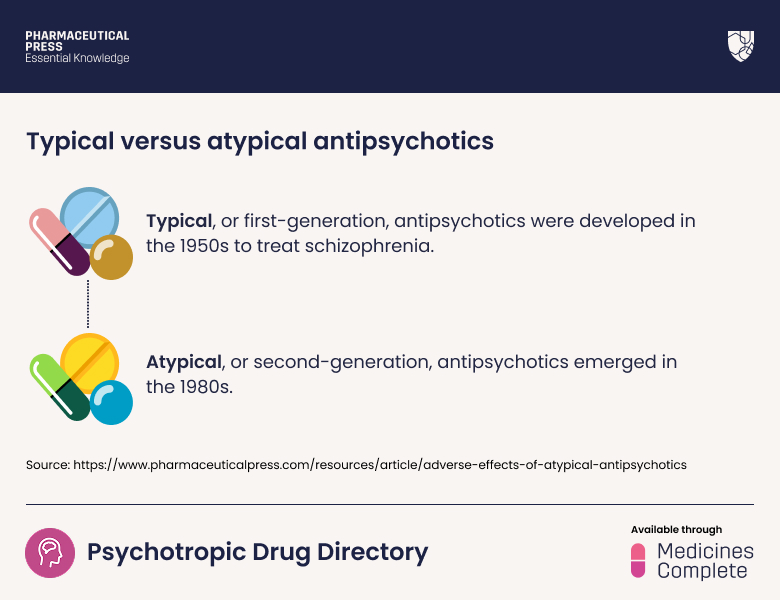
Potential atypical antipsychotic adverse events
Atypical antipsychotic drugs are generally associated with a lower risk of EPS, most likely due to their actions at receptor sites other than dopamine.⁴ With atypical agents, however, therapeutic efficacy can usually be achieved at doses that do not cause EPS.
Atypical agents do have wide-ranging and important potential side effects. These vary according to the particular agent and its mechanism of action.³ ⁴ ⁵
Other than clozapine, which is superior to other antipsychotics in treatment-resistant schizophrenia, there is little difference in efficacy between the drugs.⁵ ⁶
There is no first-line antipsychotic drug that is suitable for all patients.¹ ³
The choice of agent, then, should be tailored to the individual. Health professionals should take each person’s specific risk profile and the agents’ potential side effects into account.
Potential side effects of atypical antipsychotic medications are discussed below:
Download our Psychotropic Drug Directory user guide.
Metabolic side effects
Atypical antipsychotics are associated with a range of metabolic side effects, including significant weight gain, dyslipidaemia, and hyperglycaemia.⁵ ⁷ Studies show that people can gain more than 7% of their baseline weight after starting some atypical antipsychotics.⁸ While the increase appears to occur mainly in the first six months of treatment, it can continue after this time.⁹
Often, weight gain is compounded by other risk factors that are more common in people with mental ill health than the rest of the population. Physical inactivity, an unhealthy diet, smoking, alcohol, other medications, and the impact of symptoms can all contribute to weight gain.⁷ ¹⁰
Metabolic changes can lead to metabolic syndrome, which can involve hypertension, hyperglycaemia, and hypertriglyceridemia. In turn, this can lead to coronary heart disease and type 2 diabetes.⁷ It is also worth noting that significant weight gain can contribute to poor medication adherence.¹²
Not all atypical antipsychotics have the same impact on the metabolic system. Olanzapine and clozapine are associated with the highest risk of weight gain in clinical practice, whilst amisulpride, asenapine, aripiprazole, cariprazine, and lurasidone are less likely to have an impact.³
Cardiovascular effects
As discussed above, metabolic syndrome increases the risk of atherosclerotic cardiovascular disease, including hypertension, coronary heart disease, stroke, and premature death.¹³
Atypical antipsychotic drugs are also associated with cardiovascular side-effects such as tachycardia, arrhythmias, heart failure, and hypotension.¹⁴ Postural hypotension is common, usually as an acute effect during initial dose titration, although it can become chronic, possibly leading to syncope and falls-related injuries. Clozapine and quetiapine are the agents most likely to cause postural hypotension.³ Slow dose titration is commonly used to minimise this side effect.
The ECG abnormality QTc-interval prolongation has also been reported with atypical antipsychotics and is a particular concern with pimozide.³ Drugs with a low tendency to prolong the QT interval include:
- aripiprazole
- asenapine
- clozapine
- olanzapine
- paliperidone
- risperidone.³
Importantly, long-term exposure to antipsychotics may directly damage cardiac muscle, and cause irreversible cardiac remodelling. This may result in myocarditis or dilated cardiomyopathy, or lead to ventricular hypertrophy, ischemic heart disease, or pulmonary thromboembolism. The medicines have also been associated with an increase in the risk of sudden cardiac death.¹⁴
Movement disorders
As mentioned above, EPS are less common with atypical antipsychotics than with first-generation medications.¹ ² ³ Yet they can still occur.³
Parkinsonian symptoms, such as bradykinesia and tremor, may appear gradually. They are more common in elderly females or those with pre-existing neurological damage. Dystonia, or uncontrolled muscle spasm in any part of the body, occurs more commonly in young males.²
Acute dystonia can develop within hours of treatment initiation, and akathisia, or restlessness, characteristically occurs within hours or weeks of either starting treatment, or of dose escalation.⁵
Tardive dyskinesia is the most serious potential EPS, and it occurs more commonly in elderly females. The abnormal involuntary movements of the lips, tongue, face, and jaw can develop on long-term or high-dose therapy, or even after treatment discontinuation. In some patients, it is irreversible.⁵
Of the atypical antipsychotics clozapine, olanzapine, quetiapine, and aripiprazole have a lower risk of EPS.³
Other side effects
Other potential side effects of atypical antipsychotics include:
Hyperprolactinaemia
Antipsychotic drugs act on dopamine, which inhibits prolactin release, so most can increase prolactin concentration. Sexual dysfunction, reduced bone mineral density, menstrual disturbances, breast enlargement, and galactorrhoea are clinical symptoms of hyperprolactinaemia. It may also carry an increased risk of breast cancer.³
Risperidone and the first generation antipsychotics are the most likely to cause hyperprolactinaemia. The condition is very rare with: aripiprazole, asenapine, cariprazine, clozapine, and quetiapine.³
Sexual dysfunction
Sexual dysfunction is a frequently reported side effect of antipsychotic medication. It can be compounded by physical or mental illness, and by substance misuse.⁵
Risperidone and olanzapine are most likely to cause sexual dysfunction, while aripiprazole and quetiapine are the least likely.³
Neuroleptic malignant syndrome
Neuroleptic malignant syndrome is a rare but potentially fatal side-effect of all antipsychotic drugs.³
Signs include hyperthermia, fluctuating levels of consciousness, muscle rigidity, and autonomic dysfunction with fever, tachycardia, labile blood pressure, and sweating.³
Read our article on common mental health medications.
Blood dyscrasias
Clozapine is a known cause of the serious blood dyscrasia, agranulocytosis. Following fatalities, the MHRA recommends monitoring clozapine blood concentrations in certain clinical situations such as:
- when a patient stops smoking or switches to an e-cigarette
- concomitant medicines might interact to increase blood clozapine levels
- a patient has pneumonia or other serious infection
- reduced clozapine metabolism or toxicity is suspected.
Importance of monitoring
Regular monitoring allows health professionals to detect the early signs of side effects. They may use the findings to adjust dosages or switch treatment, recommend lifestyle changes, or initiate preventive measures to mitigate health risks. Specialist advice may be needed.
Atypical antipsychotics have transformed the management of psychiatric disorders, offering effective symptom relief with a reduced risk of EPS compared to first-generation drugs.
Their use, however, is associated with significant AEs that make careful treatment selection and monitoring essential. Regular assessment of weight, glucose levels, lipid profiles, cardiovascular health, and other biological markers will help health professionals detect the early signs of AEs – and intervene.
Through vigilant monitoring and individualised therapy, health professionals can balance the risks and benefits of treatment to ensure better outcome for their patients.
Trial form
Please complete the form below to request a complimentary trial to knowledge products through MedicinesComplete.
References
1. Taylor, D.M., Barnes, T.R.E. and Young, A.H. (2025). Schizophrenia and Related Psychoses. In The Maudsley Prescribing Guidelines in Psychiatry (eds D.M. Taylor, T.R.E. Barnes and A.H. Young). https://doi-org.knowledge.idm.oclc.org/10.1002/9781119870203.mpg001.pub2
2. Abou-Setta, A. M., Mousavi, S. S., et al. (2012). First-generation versus second-generation antipsychotics in adults: Comparative effectiveness. [Internet]. Rockville (MD): Agency for Healthcare Research and Quality (US). Available at: https://www.ncbi.nlm.nih.gov/books/NBK107237/ Last accessed: 15 May 2025.
3. BNF, Psychoses and related disorders. Available at: Joint Formulary Committee. British National Formulary (online) London: BMJ and Pharmaceutical Press <http://www.medicinescomplete.com> [Accessed on 15 May 2025].
4. D’Souza RS, Aslam SP, Hooten WM. Extrapyramidal Side Effects. [Updated 2025 Jan 19]. In: StatPearls [Internet]. Treasure Island (FL): StatPearls Publishing; 2025 Jan-. Available from: https://www.ncbi.nlm.nih.gov/books/NBK534115/
5. Willner K, Vasan S, et al. S. Atypical antipsychotic agents. InStatPearls [Internet] 2024 May 1. StatPearls Publishing Treasure Island, FL.
6. Gammon, D., Cheng, C., et al. (2021). Clozapine: why is it so uniquely effective in the treatment of a range of neuropsychiatric disorders?. Biomolecules, 11(7), 1030.
7. Carli, M., Kolachalam, S., et al. (2021). Atypical antipsychotics and metabolic syndrome: from molecular mechanisms to clinical differences. Pharmaceuticals, 14(3), 238.
8. Rummel-Kluge, C., Komossa, K., et al (2010). Head-to-head comparisons of metabolic side effects of second generation antipsychotics in the treatment of schizophrenia: a systematic review and meta-analysis. Schizophrenia Research, 123(2-3), 225-233.
9. Haddad, P. (2017). Antipsychotic medication and weight gain. Available at: https://www.bap.org.uk/articles/antipsychotic-medication-and-weight-gain/ Last accessed: 15 May 2025.
10. Haddad P, Reynolds G and Cooper S. 10th October 2016 BAP guidelines on the management of weight gain, metabolic disturbances and cardiovascular risk associated with psychosis and antipsychotic drug treatment | Articles 10th October 2016 Last accessed: 2 June 2025.
11. Akinola PS, Tardif I, Leclerc J. Antipsychotic-Induced Metabolic Syndrome: A Review. Metab Syndr Relat Disord. 2023 Aug;21(6):294-305. doi: 10.1089/met.2023.0003. Epub 2023 Jun 22. PMID: 37347965.
12. Dayabandara, M., Hanwella, R., et al. (2017). Antipsychotic-associated weight gain: management strategies and impact on treatment adherence. Neuropsychiatric disease and treatment, 2231-2241.
13. DeJongh BM. Clinical pearls for the monitoring and treatment of antipsychotic induced metabolic syndrome. Ment Health Clin [Internet]. 2021;11(6):311-9. DOI: 10.9740/mhc.2021.11.311.
14. Li, X. Q., Tang, X., et al. (2021). Antipsychotics cardiotoxicity: what’s known and what’s next. World Journal of Psychiatry, 11(10), 736.



